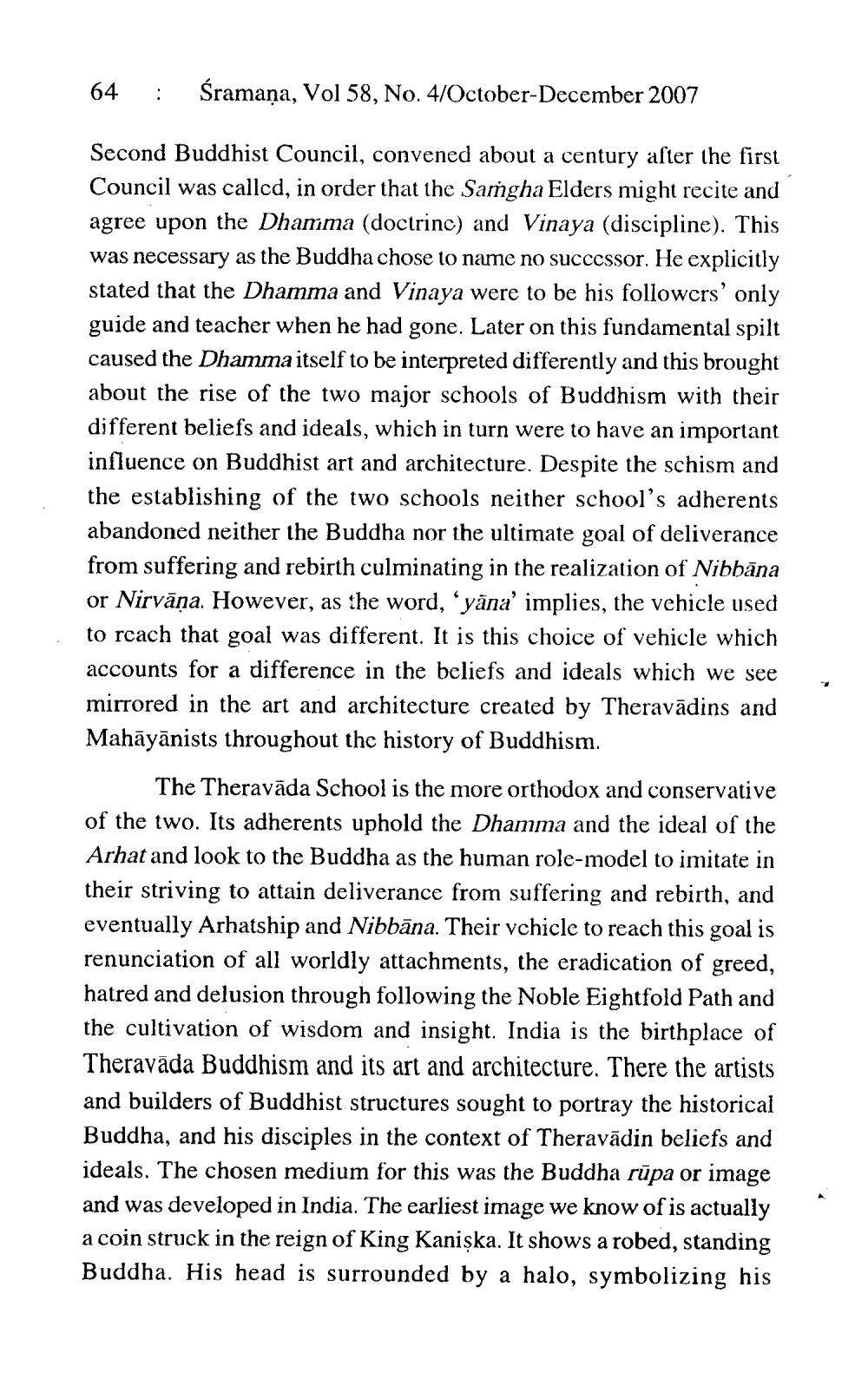________________
64
:
śramaņa, Vol 58, No. 4/October-December 2007
Second Buddhist Council, convened about a century after the first Council was callcd, in order that the Samgha Elders might recite and agree upon the Dhamma (doctrine) and Vinaya (discipline). This was necessary as the Buddha chose to name no successor. He explicitly stated that the Dhamma and Vinaya were to be his followers' only guide and teacher when he had gone. Later on this fundamental spilt caused the Dhamma itself to be interpreted differently and this brought about the rise of the two major schools of Buddhism with their different beliefs and ideals, which in turn were to have an important influence on Buddhist art and architecture. Despite the schism and the establishing of the two schools neither school's adherents abandoned neither the Buddha nor the ultimate goal of deliverance from suffering and rebirth culminating in the realization of Nibbāna or Nirvāņa. However, as the word, ‘yāna' implies, the vehicle used to reach that goal was different. It is this choice of vehicle which accounts for a difference in the beliefs and ideals which we see mirrored in the art and architecture created by Theravādins and Mahāyānists throughout the history of Buddhism.
The Theravāda School is the more orthodox and conservative of the two. Its adherents uphold the Dhamma and the ideal of the Arhat and look to the Buddha as the human role-model to imitate in their striving to attain deliverance from suffering and rebirth, and eventually Arhatship and Nibbāna. Their vehicle to reach this goal is renunciation of all worldly attachments, the eradication of greed, hatred and delusion through following the Noble Eightfold Path and the cultivation of wisdom and insight. India is the birthplace of Theravada Buddhism and its art and architecture. There the artists and builders of Buddhist structures sought to portray the historical Buddha, and his disciples in the context of Theravādin beliefs and ideals. The chosen medium for this was the Buddha rūpa or image and was developed in India. The earliest image we know of is actually a coin struck in the reign of King Kaniska. It shows a robed, standing Buddha. His head is surrounded by a halo, symbolizing his




